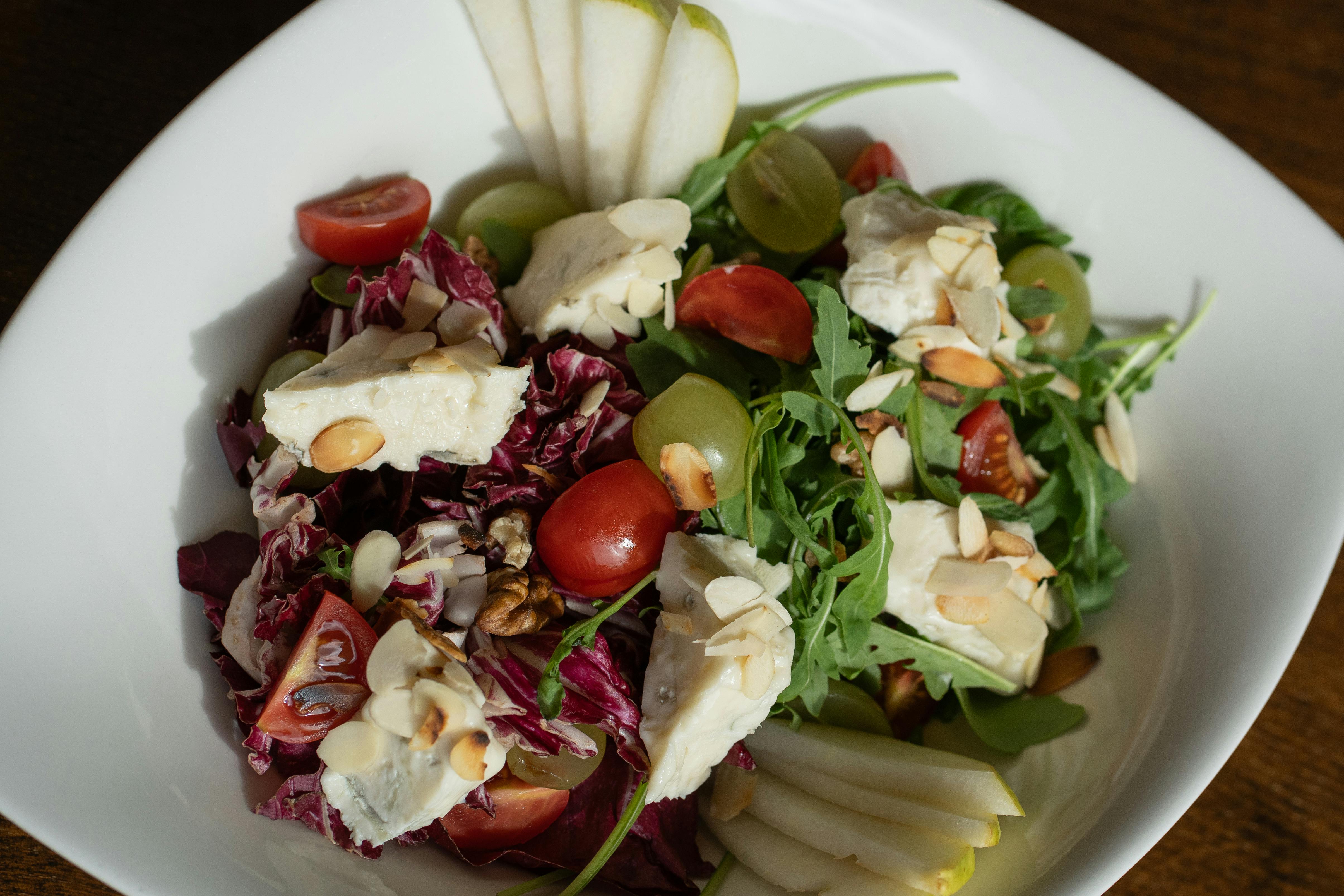Effective Ways to Optimize a Cystic Fibrosis Diet for Better Health in 2025
Cystic fibrosis (CF) is a complex genetic disorder that significantly impacts various aspects of health, including respiratory function and nutritional status. The management of a cystic fibrosis diet is crucial in maintaining overall health and ensuring optimal growth, particularly for children and adolescents. In 2025, with advancements in CF care and nutrition science, it’s essential to adopt an effective diet strategy to support individuals facing this condition.
One of the main focuses of a cystic fibrosis diet is the incorporation of high-calorie, nutrient-dense foods. This approach helps to meet the increased energy needs of individuals with cystic fibrosis who often struggle with weight gain due to malabsorption linked to pancreatic insufficiency. Incorporating healthy fats, proteins, vitamins, and minerals specifically addresses these dietary challenges, supporting respiratory health and providing the necessary fuel for daily activities.
This article outlines effective strategies to optimize a cystic fibrosis diet, focusing on meal frequency and composition, hydration, and tips for overcoming common dietary restrictions and challenges faced by individuals with CF. By providing a balanced diet rich in essential nutrients, those living with cystic fibrosis can improve their quality of life and overall well-being.

Key Strategies for Cystic Fibrosis Meal Planning
Building on the importance of a nutrient-dense diet, meal planning becomes an essential tool for individuals with cystic fibrosis to ensure they are meeting their dietary needs effectively. By organizing meals in advance, planning can help prevent nutrient deficiencies and ensure a consistent intake of high-calorie foods.
Developing a Nutritional Support Plan
A well-structured nutritional support plan involves consulting with a pediatric dietitian or healthcare professional who specializes in cystic fibrosis. They can provide guidance on individualized diet plans tailored to meet the specific needs of the patient. This plan typically includes recommendations for calorie intake, including food options that are both enjoyable and high in nutritional value.
Meal Frequency and Portions
Increased meal frequency is often recommended for those with cystic fibrosis. Eating smaller, more frequent meals can help improve digestion and enhance nutrient absorption. Furthermore, larger portion sizes of calorie-dense foods can contribute to reaching daily caloric goals more effectively. Proper meal organization will address the individual's taste preferences while incorporating necessary high-calorie and high-protein foods.
Incorporating Healthy Fats and Proteins
Healthy fats are essential components of a cystic fibrosis diet. Incorporating sources such as avocados, nuts, seeds, and olive oil can enhance caloric intake. Pairing these with adequate protein sources like fish, lean meats, and legumes is crucial for maintaining muscle mass and overall health. It is also important to consider the digestibility of foods when selecting fat and protein sources.
Essential Vitamins and Mineral Needs
Individuals with cystic fibrosis often have higher requirements for certain vitamins and minerals, particularly fat-soluble vitamins such as A, D, E, and K, due to difficulty absorbing fats. Regular monitoring of vitamin levels and supplementation may be necessary to prevent deficiencies. Incorporating fortified foods or dietary supplements can contribute to meeting these needs effectively.
Hydration and Electrolyte Balance
Maintaining hydration is critical for individuals with cystic fibrosis as they are at risk of dehydration due to increased salt loss through sweat. Ensuring adequate fluid intake and including electrolyte-rich foods can help optimize hydration levels. Drinking water, coconut water, or consuming oral rehydration solutions can support hydration strategies effectively.
By prioritizing these meal planning strategies, individuals with cystic fibrosis can create a balanced diet that addresses their specific health needs while enhancing nutritional intake and quality of life.

The Role of Protein and Calorie-Dense Foods
Following the strategies for meal planning, focusing on protein and calorie-dense foods is crucial for individuals with cystic fibrosis. These foods are essential for promoting weight gain and supporting overall health in the context of chronic disease management.
Understanding Protein Needs in Cystic Fibrosis
Protein plays a vital role in supporting growth, maintenance, and repair of tissues. For individuals with cystic fibrosis, the recommended protein intake is higher than that for the general population, often around 1.2 to 2 times the normal requirements, depending on age and activity level. Including a variety of protein sources such as meat, fish, dairy alternatives, tofu, and legumes can help meet these elevated protein needs.
High-Calorie Foods for Weight Gain
Incorporating calorie-dense foods into the diet is essential for individuals who need to gain weight. Foods high in healthy fats, such as nut butters, full-fat dairy products, and oils, can boost caloric intake without significantly increasing portion sizes. Having smoothies with added protein powder or healthy fats can provide high-calorie nutrition in an easily digestible form.
Strategies to Add Calories Effectively
Some practical ways to incorporate additional calories into meals include adding cheese to dishes, using sauces and gravies, and choosing snacks like trail mix or energy bars. It’s also beneficial to incorporate calorie-rich smoothies that combine fruits, spinach, nut butter, and protein powder for an energy boost. These strategies can effectively aid in achieving a calorie surplus beneficial for weight management.
Supplementation and Meal Replacement Options
For those struggling to meet their caloric needs through whole foods alone, meal replacement drinks and dietary supplements can serve as valuable tools. These products are specifically designed to provide balanced nutrition and are available in various flavors, making them a convenient option for both adults and children. They can be particularly useful during times of increased energy expenditure, such as during illness or exercise.
Overcoming Common Dietary Challenges
Dealing with common dietary restrictions, including lactose intolerance and gluten sensitivity, can make meal planning more challenging for individuals with cystic fibrosis. Utilizing dairy alternatives such as almond or soy milk can support calcium intake, while gluten-free grains can ensure dietary inclusivity. Consulting with a registered dietitian can help navigate these dietary challenges while maintaining optimal nutrition.
With a focus on protein intake and calorie-dense foods, individuals with cystic fibrosis can effectively manage their dietary needs while supporting overall health and well-being.
Maintaining Hydration and Electrolyte Balance
Hydration is essential when optimizing a cystic fibrosis diet, as individuals with CF often have increased fluid requirements due to higher sweat rates. Maintaining hydration and electrolyte balance can be achieved through various strategies, ensuring that individuals feel their best.
The Importance of Hydration in Cystic Fibrosis
Hydration plays a critical role in overall health for individuals with cystic fibrosis. Sufficient fluid intake aids in mucus clearance and supports lung function, reducing the risk of respiratory complications. Recommendations typically suggest aiming for 64 ounces of fluids daily, but individual needs may vary based on physical activity and climate conditions.
Electrolyte Needs and Strategies
Eating foods that are naturally high in electrolytes, such as bananas, sweet potatoes, and leafy greens, can help maintain balances. Additionally, incorporating sports drinks that contain electrolytes, especially during exercise or hot weather, can effectively support hydration levels. For individuals with higher salt losses, mindful intake of salt-rich snacks may also be necessary.
Hydration Techniques for Daily Life
Establishing good hydration habits can make a significant difference in daily routines. Here are a few practical hydration techniques:
- Carrying a reusable water bottle to encourage regular drinking throughout the day.
- Setting reminders to drink water or replenishing fluids during meals.
- Incorporating hydrating foods like cucumbers and watermelon as snack options.
Monitoring Hydration Status
Keeping track of hydration status can be as simple as paying attention to the color of urine, which should ideally be pale yellow. Increased thirst, dark urine, or dry skin can be signs of dehydration. Using the hydration tips mentioned above can help maintain optimal fluid balance and prevent complications.
Incorporating Hydration into Meal Plans
Including beverages like smoothies, soups, and broths can easily integrate hydration during mealtime. Combining hydration with caloric intake ensures that individuals responsibly manage hydration while working towards their energy goals. This holistic approach will promote long-term health in individuals living with cystic fibrosis.
Healthy Meal Prep Ideas for Cystic Fibrosis
Incorporating easy and nutritious meal prep ideas makes it simpler to maintain a cystic fibrosis diet throughout the week. Proper planning can facilitate weight gain and ensure adequate nutrition is consistently met.
Batch Cooking and Freezing Meals
Batch cooking allows individuals to prepare larger quantities of food in one go, which can subsequently be frozen for future use. Options such as stews, casseroles, and whole-grain pasta dishes are excellent choices for freezing, retaining both flavor and nutritional value. This approach saves time while ensuring nutritious meals are readily available during busy weeks.
Nutritious Snack Ideas for Cystic Fibrosis
Snacking is often an excellent opportunity to enhance caloric intake throughout the day. Nutritious snack ideas that can easily be prepared include homemade energy bars, yogurt with granola, or peanut butter with apple slices. Incorporating high-calorie snacks ensures that individuals meet their energy requirements effectively while maintaining enjoyment in their dietary choices.
Creative Smoothie Recipes for Weight Gain
Smoothies are versatile and can be packed with nutritious ingredients without extra bulk. A great smoothie recipe might include full-fat yogurt, spinach, a banana, and protein powder. Adding nut butter or avocado can further boost calorie intake while creating a satisfying texture. Experimenting with various flavors can keep smoothies exciting and enjoyable.
Meal Organization and Storage Tips
Effective use of food storage containers can help keep prepped meals fresh and organized. Labeling containers with dates and meal types can assist in keeping track of what’s available at a glance. Additionally, aligning meals with a weekly calendar can enhance adherence to dietary goals while minimizing stress around meal times.
Exploring New Recipes
Trying out new recipes that prioritize nutrient-dense ingredients can lead to discovering favorites. Look for recipes that incorporate wholesome grains, healthy fats, and proteins to aid in supporting a cystic fibrosis diet. Exploring different cuisines may also introduce new flavors and textures to keep meals enjoyable and varied.
By utilizing meal prep strategies, individuals with cystic fibrosis can maximize their nutritional intake while simplifying the cooking process, ultimately contributing to better health outcomes.
Nutritional Counseling and Support for Families
Finally, seeking nutritional counseling and support can be invaluable for both individuals with cystic fibrosis and their families. Connecting with healthcare professionals and support networks can provide essential resources and guidance in navigating the complexities of a cystic fibrosis diet.
The Role of Healthcare Teams
Healthcare teams, including dietitians knowledgeable about cystic fibrosis, play a crucial role in developing individualized meal plans and addressing dietary restrictions. Regular consultations can help adjust plans based on disease progression, lifestyle changes, and evolving nutritional needs.
Peer Support Groups and Community Resources
Connecting with peer support groups can provide emotional support and shared experiences related to dietary challenges. Community resources, such as cooking classes or nutrition workshops, can offer insights and ideas about managing a cystic fibrosis diet effectively. Engaging with a supportive community fosters resilience and healthy coping mechanisms throughout the journey.
Family Meal Planning Support
Family-centered care can ensure that everyone participates in meal planning and preparation. Establishing open communication within the family enhances understanding and support of dietary goals, making it easier to achieve individual nutrition objectives. Additionally, sharing responsibilities in meal preparation can make cooking less overwhelming.
Adapting to Dietary Changes
As individuals transition to different life stages, the need for dietary adjustments may arise. Being proactive in adapting meal plans as necessary can help manage health outcomes effectively. Consulting with registered dietitians can guide families through these transitions while ensuring that dietary needs remain met.
Future Directions in Nutrition for Cystic Fibrosis
As research and understanding of cystic fibrosis continue to expand, the outlook on nutrition will likely evolve as well. Staying informed about new findings regarding dietary interventions and personalized nutrition strategies can empower patients and families to make evidence-based decisions for better health.
In conclusion, optimizing a cystic fibrosis diet involves a strategic approach that emphasizes nutrient-dense foods, adequate hydration, and ongoing support. By implementing these effective strategies, individuals with cystic fibrosis can navigate dietary challenges, leading to improved health and enhanced quality of life.
